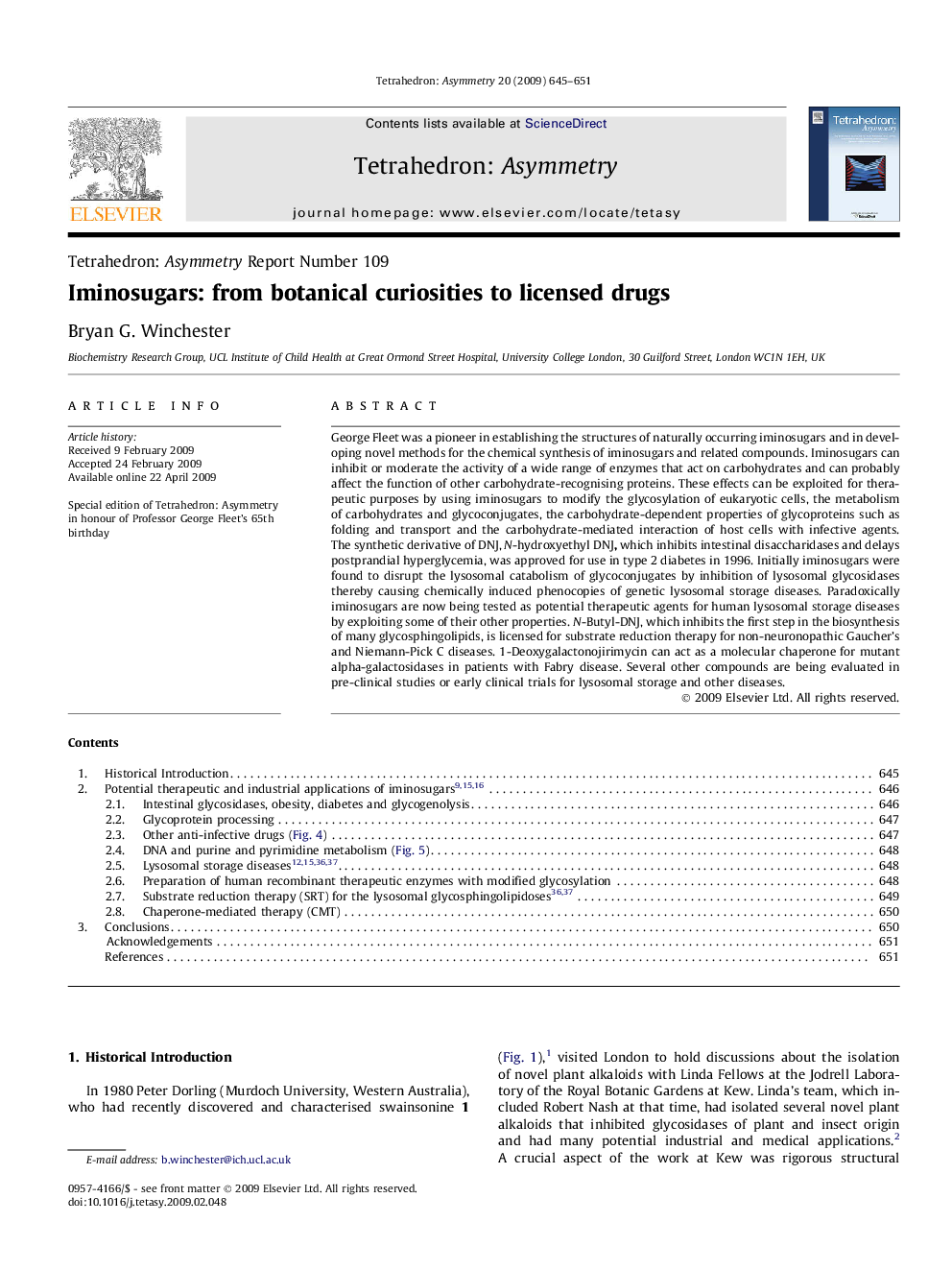| کد مقاله | کد نشریه | سال انتشار | مقاله انگلیسی | نسخه تمام متن |
|---|---|---|---|---|
| 1349836 | 1500371 | 2009 | 7 صفحه PDF | دانلود رایگان |

George Fleet was a pioneer in establishing the structures of naturally occurring iminosugars and in developing novel methods for the chemical synthesis of iminosugars and related compounds. Iminosugars can inhibit or moderate the activity of a wide range of enzymes that act on carbohydrates and can probably affect the function of other carbohydrate-recognising proteins. These effects can be exploited for therapeutic purposes by using iminosugars to modify the glycosylation of eukaryotic cells, the metabolism of carbohydrates and glycoconjugates, the carbohydrate-dependent properties of glycoproteins such as folding and transport and the carbohydrate-mediated interaction of host cells with infective agents. The synthetic derivative of DNJ, N-hydroxyethyl DNJ, which inhibits intestinal disaccharidases and delays postprandial hyperglycemia, was approved for use in type 2 diabetes in 1996. Initially iminosugars were found to disrupt the lysosomal catabolism of glycoconjugates by inhibition of lysosomal glycosidases thereby causing chemically induced phenocopies of genetic lysosomal storage diseases. Paradoxically iminosugars are now being tested as potential therapeutic agents for human lysosomal storage diseases by exploiting some of their other properties. N-Butyl-DNJ, which inhibits the first step in the biosynthesis of many glycosphingolipids, is licensed for substrate reduction therapy for non-neuronopathic Gaucher’s and Niemann-Pick C diseases. 1-Deoxygalactonojirimycin can act as a molecular chaperone for mutant alpha-galactosidases in patients with Fabry disease. Several other compounds are being evaluated in pre-clinical studies or early clinical trials for lysosomal storage and other diseases.
Figure optionsDownload as PowerPoint slide
Journal: Tetrahedron: Asymmetry - Volume 20, Issues 6–8, 7 May 2009, Pages 645–651